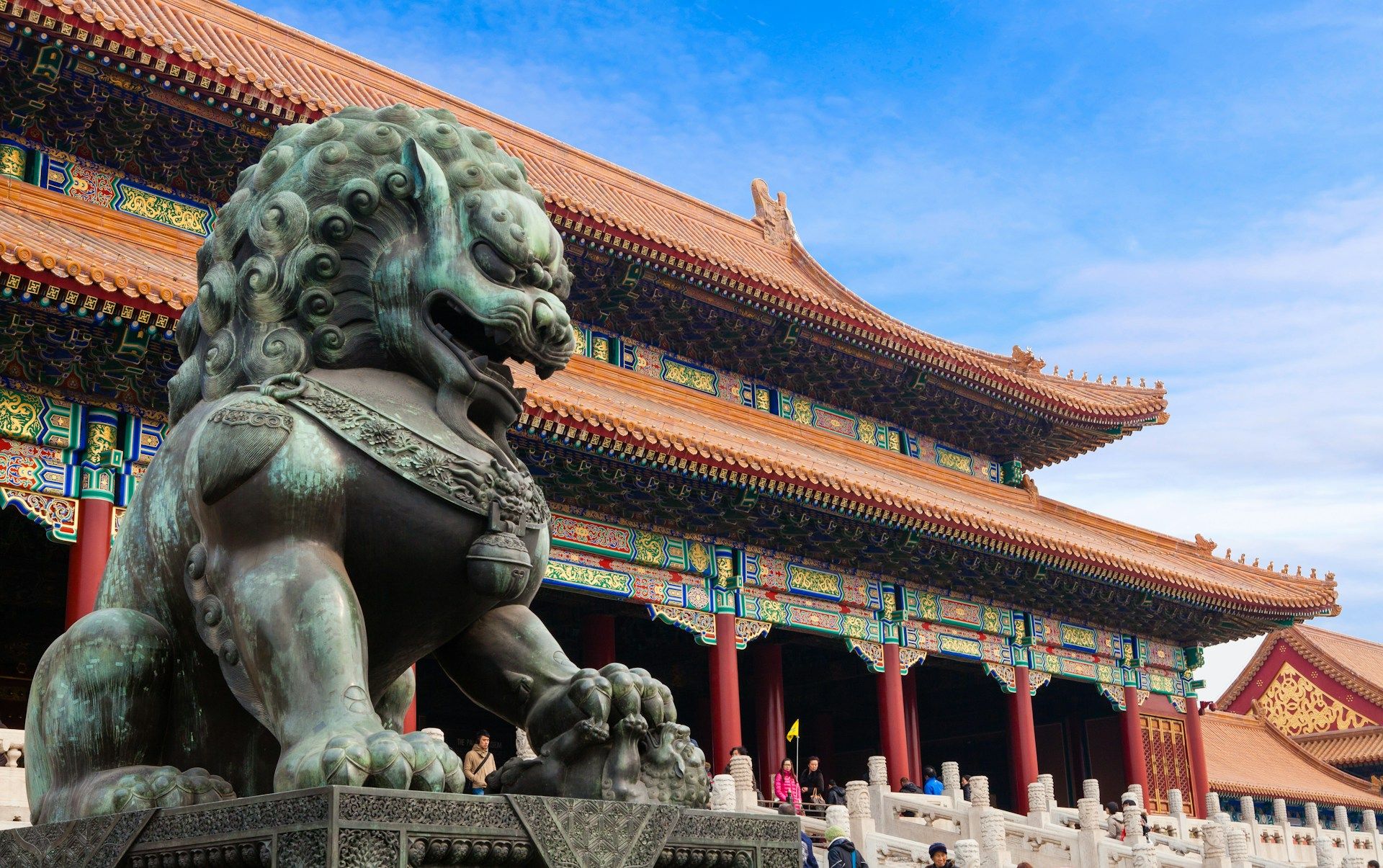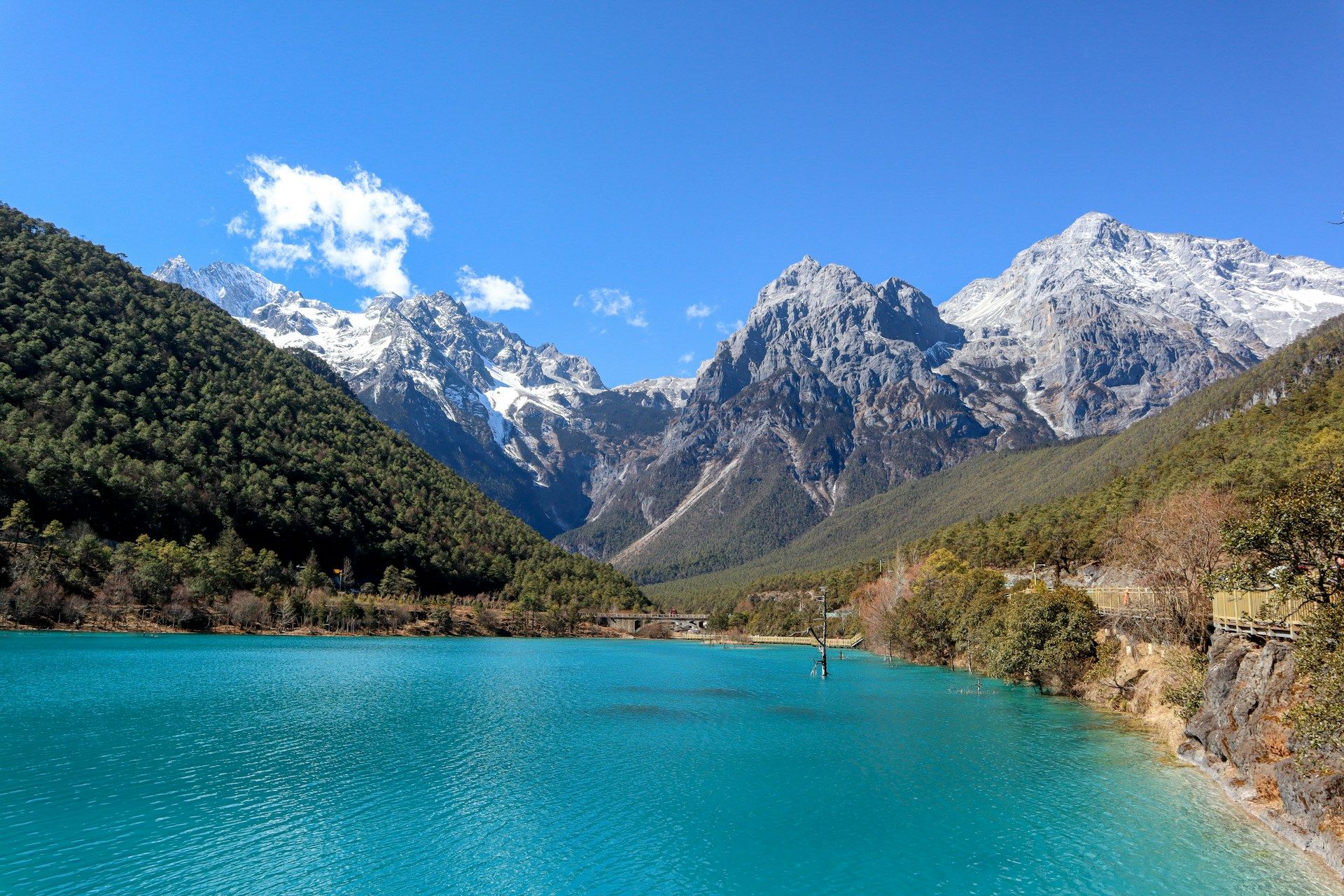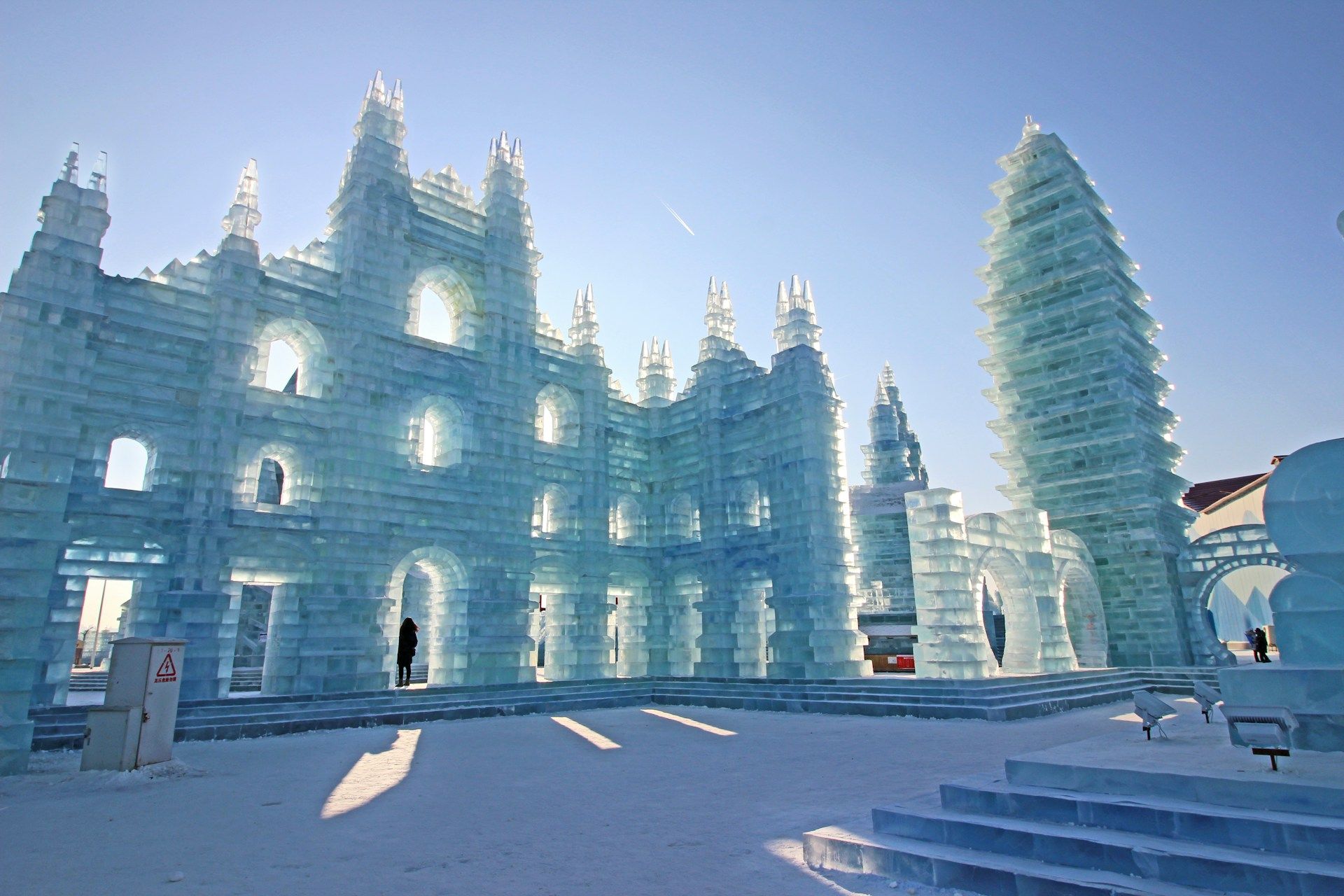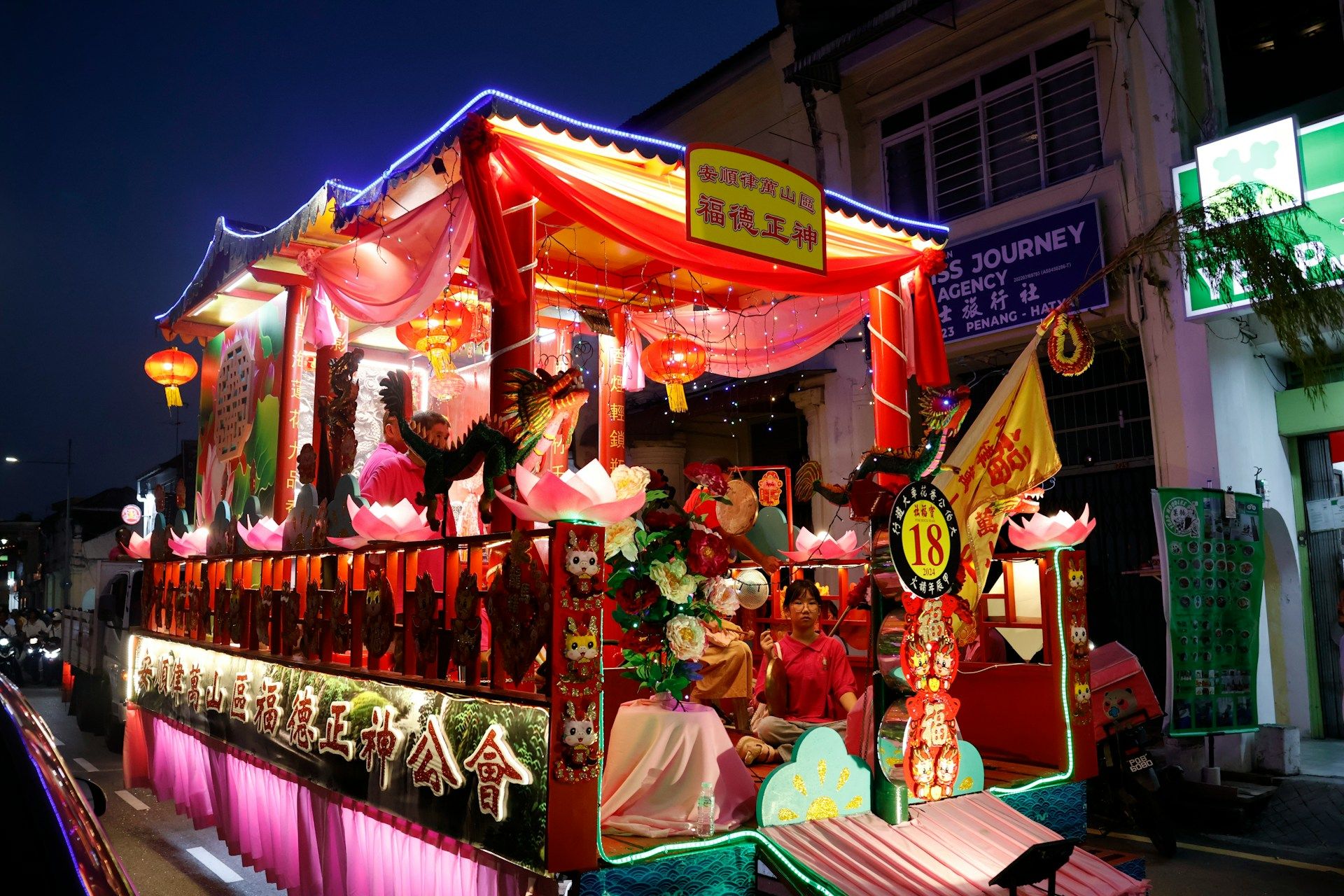Winter in China: Cold Weather, Cozy Places, and Cultural Events
Marcos•Aug 06, 2025
Choosing a winter destination might seem complicated, but we have a great option for you. China, excellent to visit at any time of the year, becomes a land of contrasts, where snow-draped mountains meet tropical valleys, ancient cities glow in frost, and vibrant festivals bring warmth to even the coldest nights.
While many travelers flock to China in spring or fall, winter’s unique allure is often overlooked. The off-peak season offers smaller crowds, lower prices, and a chance to experience China’s iconic landmarks in a more intimate setting. So give it a chance!

Photo by Bao Menglong on Unsplash
Visiting China in Winter
China is one of the largest countries in the world, which makes its weather quite varied and its landscapes quite diverse. Winter is not an exception to the rule, and describing the season in a single sentence is impossible.
While cities like Harbin in the north become frozen wonderlands, the sunny hills of Yunnan in the south remain warm and inviting. And when the ski resorts in the western mountains beckon adventurers, the ancient streets of Beijing and Xi’an become tranquil, allowing for more reflective exploration.
Let’s see a quick review of how the season is in the main areas of China.
-
Northeast China: This is the coldest part of China, often experiencing temperatures well below -20°C. You can expect frequent and heavy snowfall, making it ideal for winter sports, snow activities, and enjoying hearty northeastern cuisine.
-
North China: Snowfall is lighter but still possible, so expect cold and dry weather. Even then, cities like Beijing are explorable thanks to their central heating.
-
Central China: The winters are more moderate here, with temperatures usually between 0°C and 10°C. Snow is occasional, and even if accommodations don’t have great heating, the weather is more crisp than cold.
-
East China: We’re moving into the warmer areas in China, where winter is damp and chilly, with snow possible but rare.
-
South China: Here it doesn’t feel like winter at all, with temperatures ranging from 10°C to 25°C. So it’s the ideal option if you’re looking to escape the cold.
Is it worth traveling during the winter?
Traveling to China in winter does include challenges, of course. It is known to be a harsh season in some areas.
-
Freezing cold: Temperatures can plunge far below freezing in the north, and heating systems vary depending on the region. Conduct thorough research on your accommodations, as you may end up being quite cold and uncomfortable.
-
Pollution is a problem: In the big cities, such as Beijing and Xi’an, air quality can be a concern. Perhaps consider a more open destination.
But there are also incredible sights that you won’t see in any other season:
-
Winter festivals: There are a lot of festivals and traditions that make winter particularly special and mark the season. For example, the Chinese New Year, Lantern Festival, and the world-famous Harbin Ice & Snow Festival all offer colorful insights into Chinese culture.
-
Authentic experience: Traveling during this season also means encountering locals in their everyday rhythms. For example, you can see them shopping for Lunar New Year goods, roasting chestnuts on the street, or hiking quiet trails.
Best winter destinations in China
Harbin Ice & Snow Festival
The Harbin Ice and Snow Festival is held annually from late December to February, and is one of the world’s largest and most dazzling winter festivals. It boasts numerous incredible sights, including life-sized castles carved from ice, glowing sculptures illuminated with LEDs, and entire theme parks of frozen art.
It’s a must-see winter destination for those who love spectacle, winter ambiance, and cultural celebration. It might be touristy, yes, but it is genuinely magical. If you’re prepared for the cold and crowds, it can be a once-in-a-lifetime experience.
Jade Dragon Snow Mountain & Xiling
If you’re into winter sports, you have to check out China’s ski scene! Although it may not be as internationally famous as those in Europe or Japan, it’s growing rapidly, so consider making the trip this winter before it becomes too popular!
There are two locations specifically that we want to discuss. Jade Dragon Snow Mountain, towering over Lijiang , is one of the highest ski areas in the world, and Xiling Snow Mountain, located just outside of Chengdu, offers a more accessible but equally scenic winter playground. Keep in mind:
-
Jade Dragon is not ideal for beginner skiers due to altitude and limited runs, but it is unbeatable for scenery.
-
Xiling has a broader range of slopes and is more family-friendly, with snowmobiles, tubing, and a cable car ride with panoramic views.
-
Both sites offer snow play zones, so even non-skiers can enjoy the atmosphere.
Great Wall in Winter
The Great Wall of China is one of the most visited attractions in the world, and a must-see if you’re staying in Beijing. While most people recommend visiting in the warmer seasons, winter transforms it into a serene, snow-dusted wonder.
It might be colder, but the crowds thin dramatically, allowing you to appreciate the Wall’s vastness and solitude, and have a more authentic experience. Even if you have already visited, perhaps this is the perfect time to take a sunrise and sunset walk, as winter often brings uninterrupted vistas.
The Forbidden City
In the summer, the Forbidden City is a bustling maze of tourists and tour groups, but this changes in winter, as its golden roofs are frosted with snow and its crimson walls are muted by the low light. With fewer tourists, you might get a better idea of how it was centuries ago, a place of quiet majesty.
Winter makes it easier to truly appreciate the scale and intricacy of the world’s largest palace complex. So rent an audio tour and spend a few hours walking around the stone courtyards. If you’re a photographer, don’t forget to get your camera ready for the stunning winter visuals of red walls, snow-covered roofs, and empty corridors.

Photo by Rafik Wahba on Unsplash
Yunnan in Winter
Yunnan offers China’s sunniest winter region, making it perhaps the most underrated destination for the cold season. With incredible cities to visit, such as Kunming, Dali, and Lijiang, you can enjoy spring-like temperatures year-round, with dry air, clean surroundings, and crystal-clear skies.
And, since winter is still part of the low season, this means that you can get lower prices and fewer crowds. You can spend long hours exploring UNESCO-listed Old Towns, hiking among rice terraces, or relaxing by Erhai Lake in a light sweater while much of the country is bundled in parkas, braving the cold winter.
Jiuzhaigou
If you’re a nature lover or a photographer, you should consider joining other travelers in Jiuzhaigou. Its surreal landscape looks like a dream during the winter. With snow-laced pine trees, frozen waterfalls, and aquamarine lakes, the landscape combines to create a scene that seems almost otherworldly.
Important tips for visiting Jiuzhaigou:
-
Jiuzhaigou is located at a high altitude, so pack for cold temperatures and prepare for limited facilities.
-
Some areas may be closed depending on snowfall or conservation needs, please check before visiting.

Photo by Noppon Meenuch on Unsplash
Unexpected Winter Joys in China
Like in all countries, street culture doesn’t stop when the temperature drops. Traveling to China in winter isn’t just about scenic views, some of the greatest joys come from small, unexpected experiences that you’ll find all across the country.
Some of the most memorable moments happen not at tourist sites, but on the streets. Just imagine the experience of smelling skewers sizzling over coals, having impromptu snowball fights among locals, and seeing the lively fire bazaars of the northwest lighting up the cold nights.
What experiences to try in China in winter:
-
Try popular snacks like tanghulu (candied hawthorn), roujiamo (Chinese burgers), hot pot, and grilled squid.
-
If you’re visiting cities like Harbin and Xi’an, you’ll find street food culture alive well into the night.
-
Snowball fights are common in parks after fresh snow, and locals aren’t too surprised if a stranger joins in. So have some fun!
-
Many cities host temple fairs around Lunar New Year, featuring a variety of snacks, games, and performances. If you’re traveling in January and February, check the calendar and local events in the cities you’ll be visiting.
What to Pack for the Winter
Packing for China in winter depends a lot on the itinerary that you have planned, since you won’t pack the same for the cold Harbin or the warm southern coasts. But there are general tips that can help you out.
-
A FREE eSIM from Yoho Mobile: No matter where you are in China, this trip is the ideal opportunity to try Yoho Mobile’s free eSIM. Or, if you’re already a customer, use the promo code YOHO12 for 12% off your next purchase!
-
Your layers may vary, but whether you’re using thermal or sweat-wicking materials, they’ll help keep you warm.
-
Bring insulated, waterproof boots if you’re heading north or plan to trek. Meanwhile, for cities in the south, comfortable walking shoes with a good grip are enough.
-
Don’t forget to stay hydrated and moisturized, always bring a refillable water bottle, lip balm, and a good travel humidifier.
-
Chinese cities, especially large ones, have a fashion-forward edge. You’ll see locals in chic wool coats and sleek boots. Don’t be afraid to dress well, it’s part of the fun!


